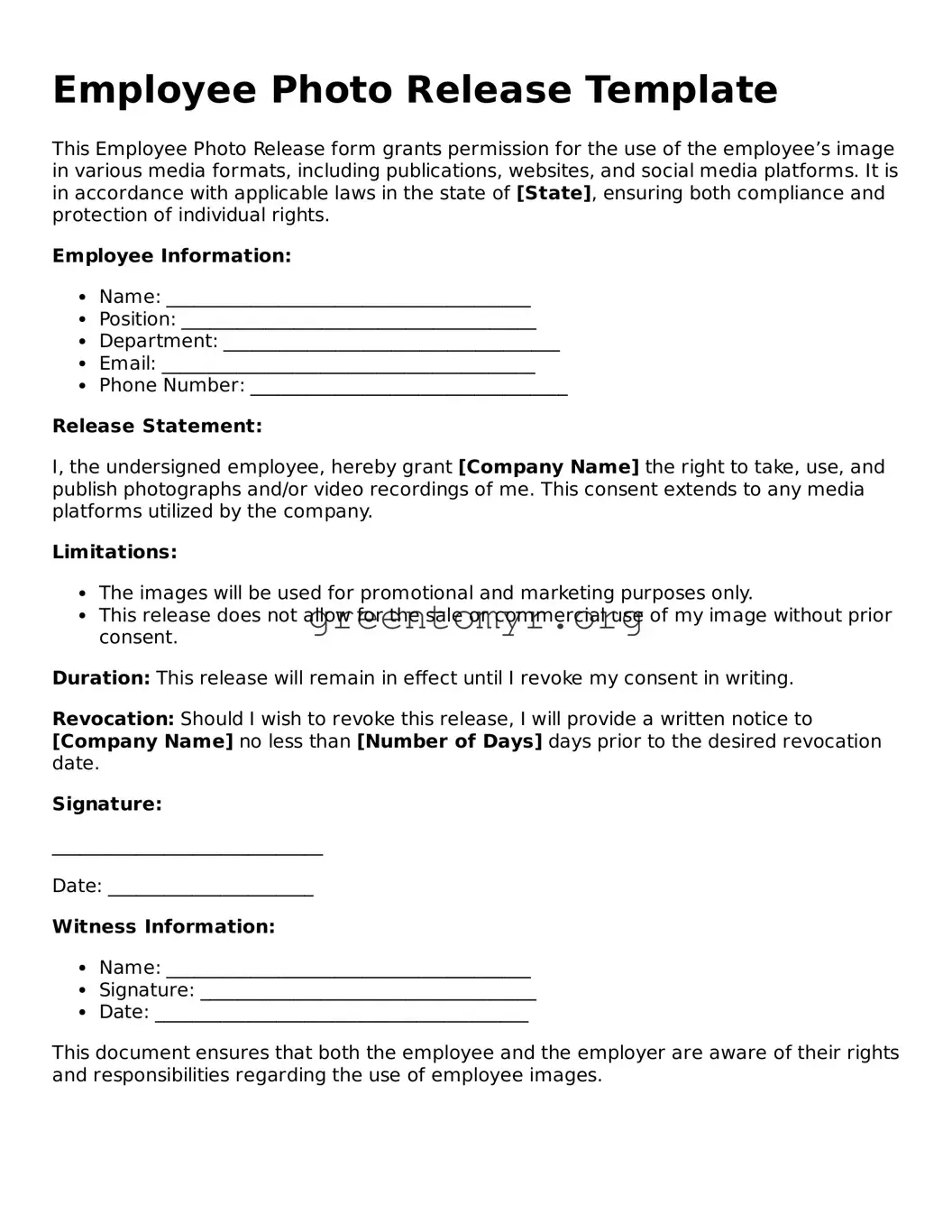Employee Photo Release Template
This Employee Photo Release form grants permission for the use of the employee’s image in various media formats, including publications, websites, and social media platforms. It is in accordance with applicable laws in the state of [State], ensuring both compliance and protection of individual rights.
Employee Information:
- Name: _______________________________________
- Position: ______________________________________
- Department: ____________________________________
- Email: ________________________________________
- Phone Number: __________________________________
Release Statement:
I, the undersigned employee, hereby grant [Company Name] the right to take, use, and publish photographs and/or video recordings of me. This consent extends to any media platforms utilized by the company.
Limitations:
- The images will be used for promotional and marketing purposes only.
- This release does not allow for the sale or commercial use of my image without prior consent.
Duration: This release will remain in effect until I revoke my consent in writing.
Revocation: Should I wish to revoke this release, I will provide a written notice to [Company Name] no less than [Number of Days] days prior to the desired revocation date.
Signature:
_____________________________
Date: ______________________
Witness Information:
- Name: _______________________________________
- Signature: ____________________________________
- Date: ________________________________________
This document ensures that both the employee and the employer are aware of their rights and responsibilities regarding the use of employee images.
